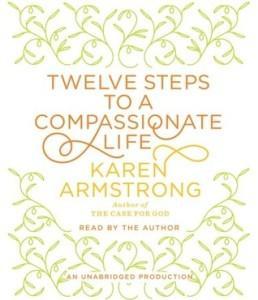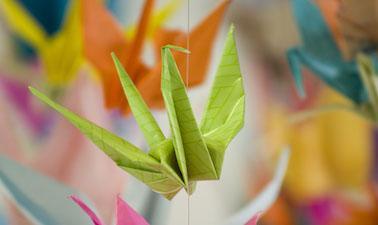 A process for developing personal compassion to engage in compassionate community for a more compassionate world
A process for developing personal compassion to engage in compassionate community for a more compassionate worldWelcome to Compassionate Sunday. We’re working through Twelve Steps to a Compassionate Life by Karen Armstrong, one step per month.
The month of March is devoted to The Second Step: Look at Your Own World. If you’d like to share a post about what you learned about compassion (The First Step) or what you’re seeing in your world, use the link list below or join the discussion in the comments or on Facebook.
Initial Review of Religious Literacy: Traditions and Scriptures
 Illustration used as the logo for the Religious Literacy course at EdX
Illustration used as the logo for the Religious Literacy course at EdXFirst, I want to give an update on the MOOC, massive online open course, that I started last week. Religious Literacy: Traditions and Scriptures relates to many of the same issues as Twelve Steps to a Compassionate Life. In the first week, we learned about the difference between studying religions and practicing a religion and what the benefits to study are (although that’s not at all saying it’s a superior approach, just a helpful one).
The class material, so far, is superb — definitely worth the price of entry (it’s free) and the time to read and watch.
I’m disappointed that the discussion forum software isn’t adequate for the task at hand. One of the draws for this course was the opportunity to interact with people living around the world who have vastly different religious experiences. I’ve seen the diversity and appreciate it. The interactions, though, are impeded by the software. This is doubly disappointing since I use forum software every day at 3 Fat Chicks that handles even more people than are registered for this course.
The course advertised that it would take three hours of effort each week. I spent more than that on the first day! So, that’s the plus side of the discussion being less than I hoped for. I can curtail that aspect and get much closer to the three hours a week that I allotted.
There’s still plenty of time to join us! If you live in St. Louis, a friend has started a real-life study group for both this class and Twelve Steps to a Compassionate Life. Let me know and I’ll see if I can hook you up. I’m very much looking forward to meeting these people this weekend!
The Second Step: Look at Your Own World
I’m going to focus on two problems that keep cropping up when I work with this chapter. I hope by making them very clear in my mind (and yours, so you can keep me accountable), that I’ll be able to approach this step in a more appropriate way than my initial effort.
First, when I look at my world, I find myself in a judgmental stance. Contemptuous, even — the opposite of compassionate! This is clearly not what Armstrong intends:
…we should not approach our task with the harsh zeal of a reformer; there should be no anger, frustration, or impatience in our survey. We must look at our community with compassion, estimate its strengths as well as its weaknesses, and assess its potential for change. p. 68
Second, I keep wanting to jump to action items as I look at the world. But, this chapter is about looking and assessing. We can identify some possibilities for later action, but now is not the time to settle on anything.
Now that I’ve looked at these two together, I see a trap that I’ve been falling into. It’s easy to be contemptuous of, say, Trump supporters. But, it’s also clear that I have no ability to create change in that arena. When I approach a situation with both contempt and a too-quick search for solutions, what I get is permission to do nothing.
If I take the time to look at my world with a less judgmental view and one that is about assessment rather than action, I stand a much better chance of identifying what works and what doesn’t so that I can align myself with the successes.
So, that’s what I’ll work on for next week’s post. What are the opportunities and possibilities for compassion in my communities?
What are you doing to learn about compassion in general or in the specific arenas in your sphere?
